While the primary wish for rugby in 2021 is to welcome the fans back into stadiums after a catastrophic period due to Covid-19, the game will continue to produce players who have the potential to leave supporters open-mouthed with their skill, physicality and mental resolve. The XV asked their correspondents all over the globe for players who are set to have a big year, whether they are teenage starlets, breakthrough acts or individuals set to have a second shot at glory.
New Zealand
Folau Fakatava (21, scrum-half, Highlanders)
All three of the All Blacks’ current scrum halves will be on the ‘wrong side’ of 30 when the next World Cup rolls around in 2023. That provides a perfect opportunity for someone like Folau Fakatava to stake a claim to join the team in a backup role. Fakatava has spent the past two years in Aaron Smith’s wing mirror at the Highlanders, learning his trade off one of the best in the business. New head coach Tony Brown will be confident that his young charge can take on a more prominent role in 2021 following an excellent season with Hawke’s Bay in New Zealand’s provincial competition. While Fakatava’s core skills certainly aren’t up to the same level as Smith’s, he possesses one of the best running games in the country and should keep opposition defences on their toes. With TJ Perenara spending the Super Rugby season in Japan, 21-year-old Fakatava has a genuine opportunity to convince the national selectors that youth is the future.
Akira Ioane (25, blindside/No 8, Blues)
It seems not long ago that Akira Ioane was unfairly being written off as just another player who had obvious potential but lacked the mental fortitude or that little bit extra needed to really push on as a Test rugby player. Still just 25, those perceptions have likely been turned on their head after a sublime performance from Ioane in the All Blacks’ final test of the year against Argentina. Ioane has spent the majority of his career playing in the No 8 jersey but it was on the blindside flank where he turned in a performance that had critics harking back to the halcyon days of Jerome Kaino and Jerry Collins. With no obvious partner for the likes of Sam Cane and Ardie Savea in the loose forwards, Ioane will head into 2021 knowing that he could lock down a spot in the All Blacks with some consistent hit outs for the Blues. Ioane won’t be the only young loosie still eyeing up the still-vacant All Blacks blindside flanker berth, however. That competition will hopefully bring out the best in the big man.
Australia
Fraser McReight (21, openside, Queensland Reds)
Michael Hooper may regret his Japan sabbatical this year as the door swings open for Fraser McReight to show Dave Rennie he is the premier loose in the Australian game. A leader in the pack of young guns who graduated from under-20s to the top grade in 2020, McReight is every bit as energetic around the park as the Aussie captain and shows real presence over the ball. Playing wide or tight, strong in attack and defence, the Queensland flanker easily made the grade in Super rugby in 2020 as well as handing a debut at Test level. With maturity and experience to come, McReight is well positioned to topple a legend and be the next dominant Aussie No 7 on the world stage.
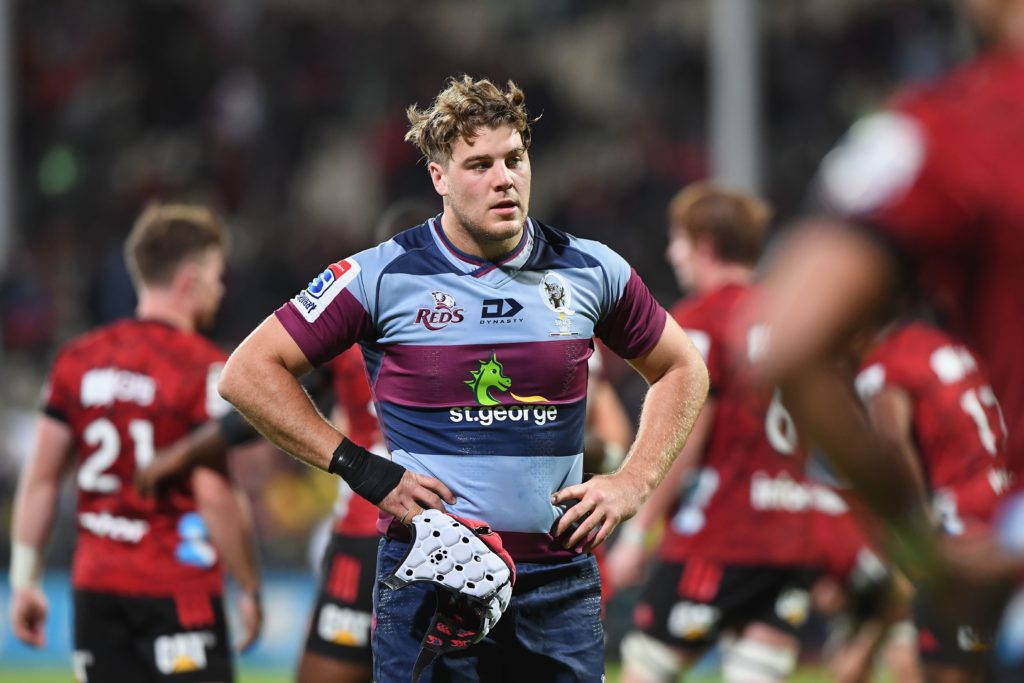
Suliasi Vunivalu (25, wing, Queensland Reds)
Following the Marike Koroibete path to the Wallabies through the Melbourne Storm National Rugby League team in Australia, Suliasi Vunivalu was included in the Wallabies camp in 2020 just two weeks after scoring a try in a grand final victory for the Storm. Dave Rennie knows he has another Fijian flyer primed to take a Wallabies wing spot this year, and to think of the kind of player he’s getting, you need to consider Israel Folau combined with Koroibete. At 1.92m and 100kg, this speedster beat Folau’s try-scoring record in his NRL debut season and is guaranteed to provide the Queensland Reds and Wallabies with some serious strike power out wide and in the air in 2021.
Ireland
Craig Casey (21, scrum half, Munster)
It felt more like the passing of a baton than a regular replacement. The Stade Marcel Michelin last month. Clermont-Auvergne held a six-point lead when the official held up his board to signal that Conor Murray would be coming off. Murray, veteran of two Lions tours, three World Cups, and not so long ago tagged with the Mr Indispensable label by Munster and Ireland, was now being hooked., Craig Casey was the one handed the responsibility to change the game. Seventeen minutes and 14 points later, Munster had a famous win and Casey had progressed from promising new boy into the delivery man. “When you play scrum half, you have to believe you are the best player on the field,” says Eddie O’Sullivan, the former Ireland coach. Casey does. And not without reason, given his devastating turn of pace, crisp delivery, eye for a gap and consistently brilliant form in a Munster shirt since he made his European debut back in January “That kid is the real deal,” says O’Sullivan.
Ryan Baird (21, second-row, Leinster)
It is one thing following in someone’s footsteps, another to effectively stalk them. No sooner had James Ryan mapped the path then Ryan Baird was punching the destination into his Sat Nav. He went to the same school as Ryan, came through the same age-grade academy, plays the same position. The similarities don’t stop there, Baird’s mobility, thirst for work and ability to pilfer opposition line-out ball resulted in him partnering Ryan in the Leinster second-row for the Champions Cup win over Northampton. Only injury stopped him making his Ireland debut in November. His chance will come soon again in 2021.
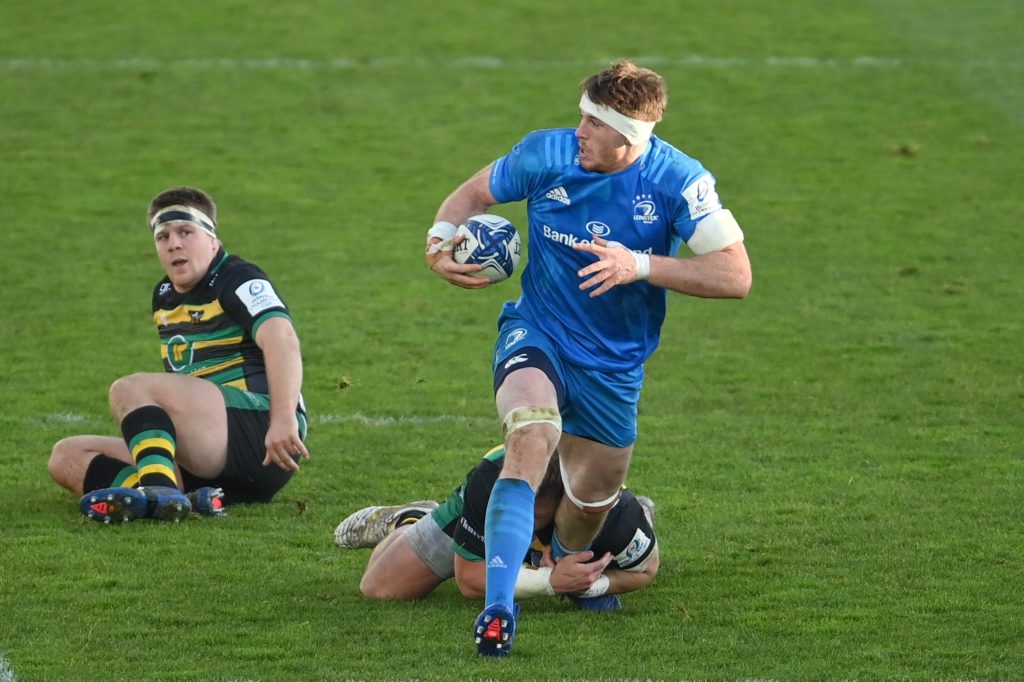
Wales
Johnny Williams (24, centre, Scarlets)
Twelve months ago, Johnny Williams would have laughed if you’d told him he would be the glue that would hold the Wales backline together as it careers towards France in 2023. Having recovered from testicular cancer, and a break from the game, he secured a move to the Scarlets, as a Welsh-qualified player. To give him his full name, John Bleddyn Rhys Williams, delivered the type 80 minute perforamance against England that suggested he could fill the Jamie Roberts-Hadleigh Parkes-sized hole in the Welsh midfield with aplomb. A strapping 6ft 3in and nearly 16st, Williams is no gain-line merchant, either; with long levers, he often looks to offload in contact and has a howitzer of a left-boot to clear danger from the backfield.
Ben Carter (19, second-row, Dragons)
Ben who? That might well be the reaction of all but the most bookish Welsh rugby fans, but the young Dragon tore up the record books with 31 tackles in the rearguard action against the Glasgow Warriors last month. In a similar way to James Ryan and Jonny Gray, Carter relishes his defensive work, and at 18st 4lb and a lofty 6ft 6in, insiders say he still has room for physical growth. Aside from his prodigious workrate, Carter is a more cerebral lock, who is happy to call the line and has shown captaincy credentials. With Jake Ball moving back to Australia and Alun Wyn Jones in the vintage stage of his career, Carter is one of a clutch of young Welsh second-rows eager to step-up.
England
Ollie Lawrence (21, centre, Worcester Warriors)
Described by one commentator as a ‘cheetah waiting in the undergrowth’, before taking a hard line over the whitewash, Lawrence is profiting from the long-term injury to Manu Tuilagi and Eddie Jones’ predilection for playing Jonathan Joseph on the wing. In truth, despite his tender years, Lawrence didn’t look out of place in England’s Autumn Nations campaign. It was an understated start to what promises to be a fruitful Test career, without his trademark busts in midfield, but he was assured defensively and showed an astute passing game. A shade under 6ft, but an explosive 15st 10lb, Lawrence is also fleet of foot with a good step and looks to further establish himself in the England set-up throughout 2021.
Will Stuart (24, tight-head, Bath)
There was a moment in last year’s Six Nations when Kyle Sinckler, a not-so-diddy 6ft and 18st, walked from the Twickenham turf to be replaced by Stuart. To say the replacement dwarfed the Bristol Bear would be an understatement. At 6ft 2in and a few Shredded Wheat short of 21 stone, the mullet-headed Stuart is a door-filler of a prop. He can play, too. Agile enough to get round the park and truck into contact – he is one of the Premiership’s foremost carrying front-rows and keep the tackle count ticking over in double figures. The former Wasps tighthead, who had stints at Moseley and Blackheath to build up his ‘scrummaging years’, hasn’t overlooked his set-piece work and under the tutelage of Neal Hatley, is set to keep Sinckler honest in their pursuit of the England No 3 shirt..
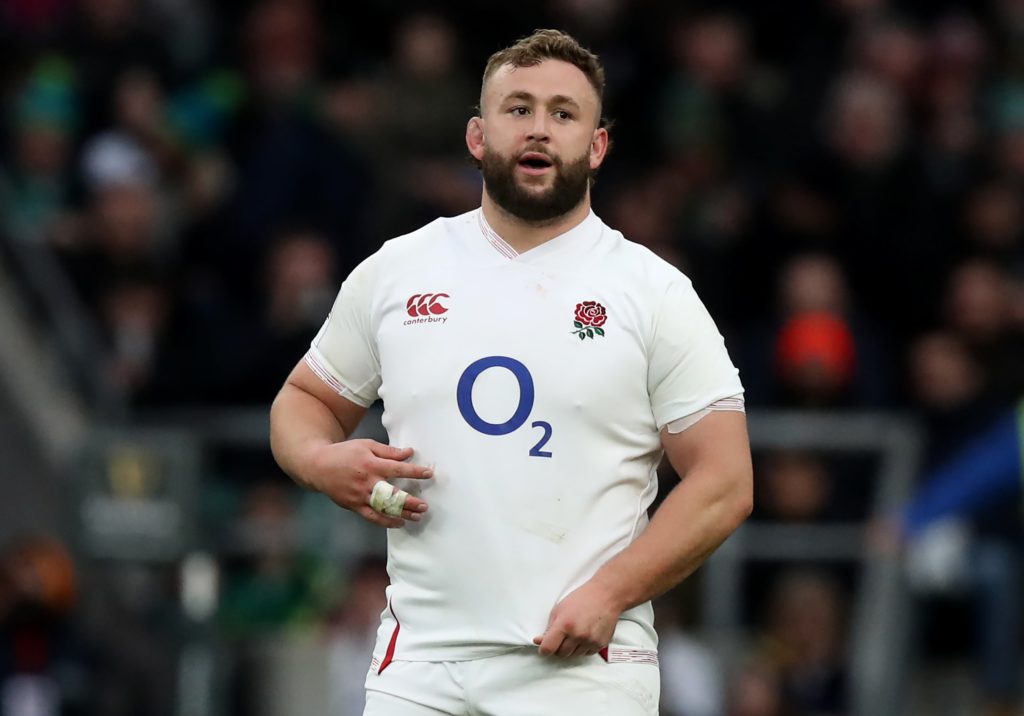
France
Killian Geraci (21, second-row, Lyon)
At a glance, Killian Gerachi resembles Félix Lambey, with his shock of red hair, but the former two-time World Champion with the France U20s who plays alongside Lambey at Lyon, stands a few inches taller at 6ft 7in, and has the same appetite for work around the park as his flame-haired partner, who was capped 10 times by France. Part of France’s ‘Golden Generation’ which includes Romain Ntamack, Louis Carbonel and Cameron Woki, Gerachi, who hails from the South-West, played against Italy in the Nations Cup, making 14 tackles and is tipped to take over from Bernard Le Roux in the French boiler room when the South African bows out.
Damien Penaud (24, wing, Clermont Auvergne)
France is blessed with an abundance of fine wings. Teddy Thomas can lift you off your seat with his brilliance, Alivereti Raka can shock with his power, while Vincent Rattez can glide across the turf while barely making an imprint, but many of France’s rugby cognoscenti say Damien Penaud is the most complete wing of them all. A sumptuous score against England in the 2019 Six Nations served notice of his class and tries against Italy and Scotland followed. A clutch of injuries have stymied his progress through 2020, but his 6ft 2in frame, can pick up to a gallup in no time and with his father, the great Alain Penaud’s genes, he can play ball in the loose, with a power-fend and sublime offloading skills. He can cover perfectly competently at 13 and is a class act who should thrive under Fabien Galthie.
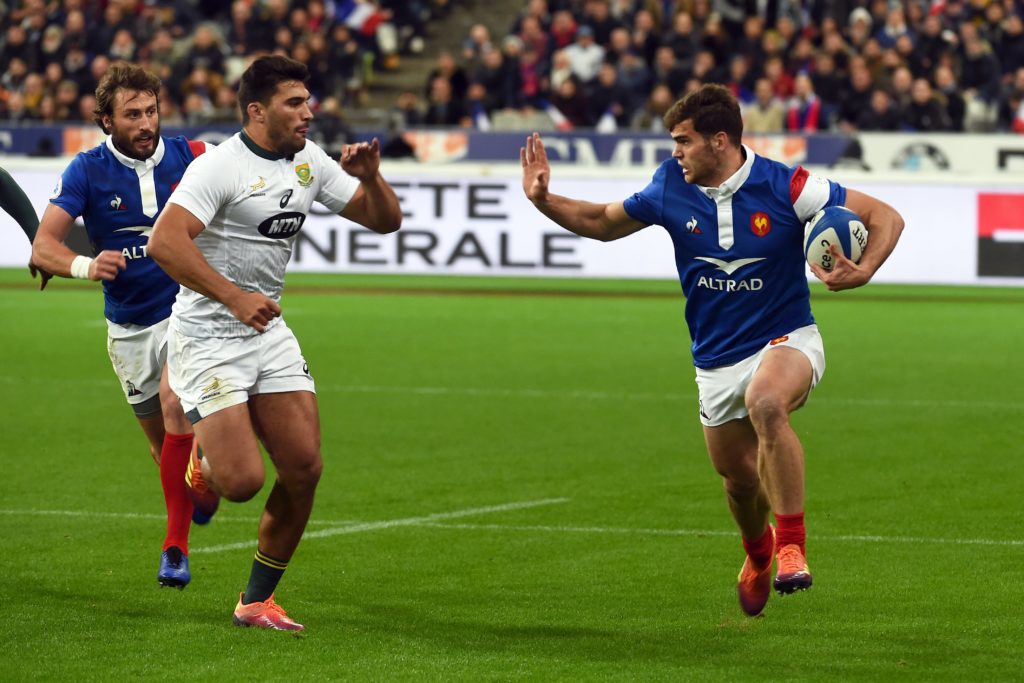
Scotland
Jamie Dobie (19, scrum-half, Glasgow Warriors)
Glasgow plucked the lithe scrum-half straight from school at 18, so compelled were Dave Rennie and Jason O’Halloran by the teenager’s blistering talents. Dobie has a beautiful, crisp pass, and a fine running game, but for an 81kg rookie his work in contact is particularly noteworthy. He may not be big, but he certainly tackles big. What Dobie also has is striking psychological maturity. He speaks well and has long practiced sound habits in terms of his preparation for his crack at the professional game. And he has the precious, and precocious, tendency to roar back from mistakes. Against the Dragons last term, Dobie threw an early interception pass which gave up seven points. He finished the contest as man of the match. With Ali Price and George Horne on Scotland duty, he will have the chance this year to continue his steady rise.
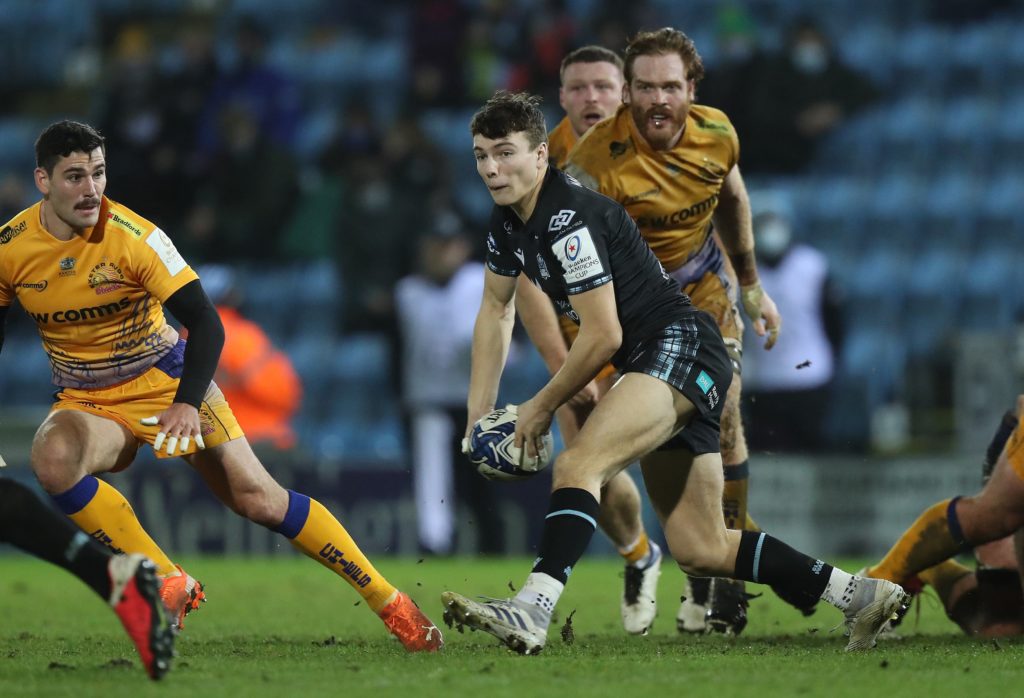
Connor Boyle (20, openside, Edinburgh)
If – and, alas, it seems more a question of when – Hamish Watson and Jamie Ritchie leave Edinburgh, Richard Cockerill has a hungry, home-grown talent waiting in the wings. Boyle, who turns 21 in February, was an eye-catching performer as captain of Scotland U20 in the Six Nations and Junior World Championship of 2019 and impressed again alongside clubmate Rory Darge in 2020. He is a proper, snarling, belligerent openside in the Watson mould who can snaffle ball and punch holes in defensive lines. In Ritchie, Watson and Bill Mata, the young flanker has had a slew of superb tutors. In 2021, expect him to come of age.
South Africa
Aphelele Fassi (22, full-back, Sharks)
With Jacques Nienaber potentially looking beyond the ageing talents of Willie Le Roux, the race to fill the No 15 shirt has started. Heavily tipped is Sharks flyer Aphelele Fassi. With fast feet and a loping stride, Fassi was a standout in Super Rugby before the lockdown, constantly beating the first man and eating up metres. Adept at hitting the gap, and with enough power to bust through defenders, at nearly 6ft 3in, he is rarely beaten in the air in defence and has a cultured left-boot on him to clear his lines. All being well, Lions supporters could be seeing a lot more of him in the summer.
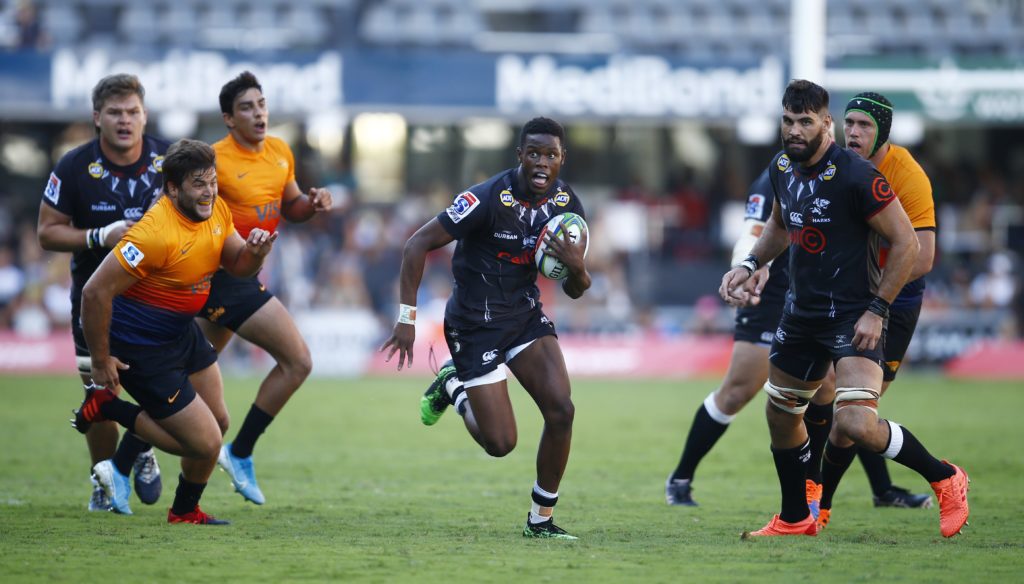
Marcell Coetzee (29, backrow, Ulster)
A tell-tale sign of the value a player is held in by a team is the consternation by fans when declares he’s upping sticks. If we are to use that barometer, it’s clear Marcell Coetzee was an extremely important part of Dan McFarland’s Ulster side. The power-packed backrow has been mowing over defenders in the Pro14 for the past four years, but Jake White has tempted the 6ft 4in, 18st backrow back to the Bulls, where he will move straight into contention to face the Lions in the summer, after missing the 2015 and 2019 World Cups through injury. A bull of a man, OPTA boffins have calculated that since the start of the 2018-19 season, he has made 100 more carries than the next best (Bill Mata). He lies second for offloads and turnovers won. A huge blow for Ulster, but a fillip for South African rugby.
Fiji
Simione Kuruvoli (21, scrum-half, Tailevu)
That we did not see Vern Cotter’s Fiji at full gallop last autumn was one of the greatest rugby disappointments of 2020, and so we were not able to revel in the visceral brilliance of his rough diamonds. The Fijian galacticos are obvious, but Cotter is working hard to promote and develop young men from the archipelago, taking advantage of the high-performance setup spearheaded by Simon Raiwalui. Kuruvoli is a 21-year-old half-back with massive potential, a hot-stepping rapier who played for national U20s and Fijian Drua. While enrolled at the famous Queen Victoria School, he dazzled in rugby league and has also impressed in Australian Rules football. He is still playing for Tailevu province at home, but do not expect him to remain untouched by clubs in England and France if he is given the opportunity to show his wares this year.
Argentina
Marcos Kremer (23, backrow, Jaguares)
Alongside Pablo Matera, Marcos Kremer formed an impenetrable wall against the All Blacks, making 28 tackles out of the side’s 152, in their historic 25-15 victory. When you look at him, it’s somewhat unsurprising. At 6ft 7in and over 18st, he is built like a proverbial brick shithouse. Such was his physical stature that he was called up at 18 before playing for Los Pumas age-grade sides and, much like Courtney Lawes, he trades in dominant tackles, where the defender is knocked back squarely on his behind, often dislodging the ball. As a carrier, he prefers the Samoan sidestep to looking for space and given his height, can happily move up to the second-row. Heavily rumoured with a move to Stade Francais, Kremer endured personal heartache when his girlfriend died of leukemia at just 23 in 2018. Matera is one hell of a specimen.
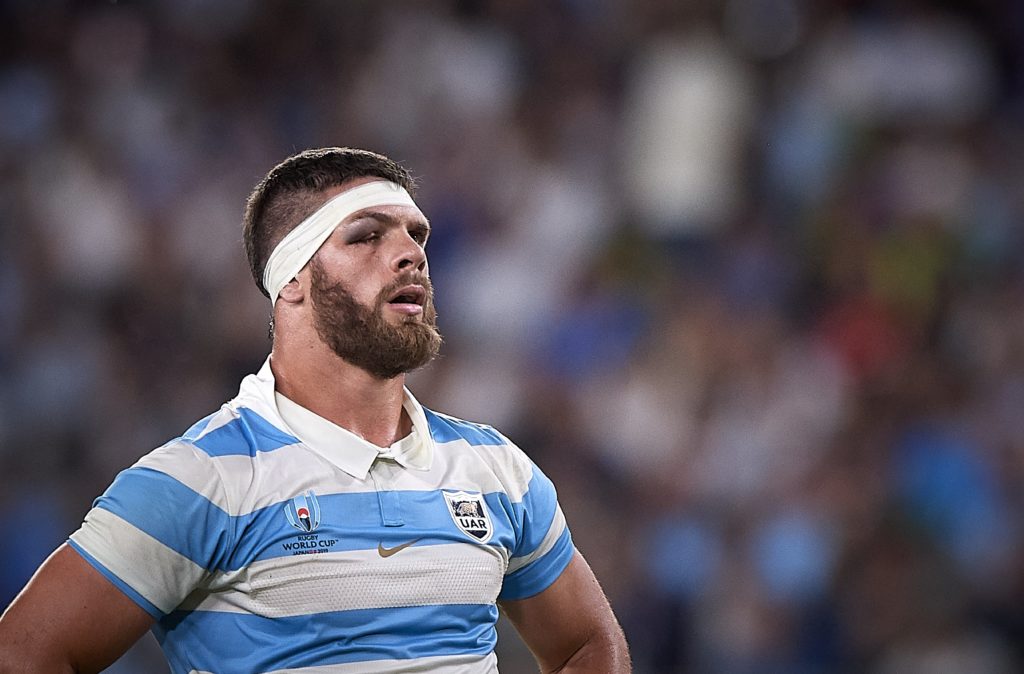
Georgia
Giorgi Kveseladze (23, centre, Gloucester)
Everybody knows about the bull-headed front-row monsters Georgian rugby churns out like rocks hardened by a passing glacier. If you open a cupboard in the corridors of a French ProD2 club, Georgian props come tumbling out. But these past few years, thanks to a rapidly improving infrastructure, astute coaching and a world-class training facility, the Georgians have developed a spree of athletic, footballing backs. Some of them – Vasil Lobzhanidze, Tedo Abzhandadze and Gela Aprasidze – have already won contracts abroad, but Kveseladze is the next cab off the rank. A powerful, effervescent centre explosive on both sides of the ball, he had world rugby purring with his howitzer of a score against Ireland in the autumn, a slaloming solo run that bamboozled five opponents. At 23, having spent his entire career to date in Georgia, he could be a brilliant – and inexpensive – pick-up for George Skivington’s evolving Gloucester. Kveseladze may be raw, but there is tantalising scope for him to develop in a full-time professional environment with Alex King looking after him.
If you’ve enjoyed this article, please share it with friends or on social media. We rely solely on new subscribers to fund high-quality journalism and appreciate you sharing this so we can continue to grow, produce more quality content and support our writers.


Comments
Join free and tell us what you really think!
Sign up for free